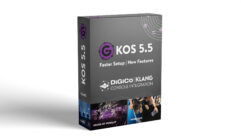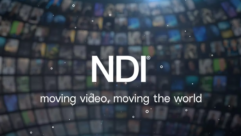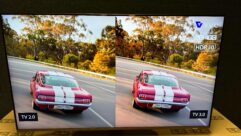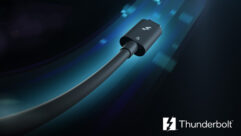5-Minute Interview: David Feeney
David Feeney: Director of digital education, Temple University, Philadelphia.
David Feeney: Director of digital education, Temple University, Philadelphia. Temple University implemented a rich media capture system that has developed from a pilot program to an institution-wide standard. Dr. Feeney and his Temple colleagues presented the system at InfoComm International’s EduComm Conference in June.
Pro AV:What are rich media capture systems?
Feeney: They are the means by which stimuli in the classroom are recorded and delivered to audiences beyond that classroom. I use the term “academic capture system.” In any location where presentations are recorded, they can be delivered to first wave audiences (students in the seats) and second wave audiences (students not in the classroom). That could be for exam prep, mid-terms, quizzes, etc. In our system, the speech presentation is synchronized with a flash movie of what’s happening on the instructor’s PC.
Pro AV: How was this implemented at Temple University?
Feeney: It started with a partner organization that responded to our interest in capturing presentations for student reuse. Initially, we tried everything from students using digital audio recorders to note-takers using an analog audio recording system. In 2004, our partner company devised a custom system that would expand the capture from PowerPoint slides to any visuals on the PC, and create a flash movie. We still had the ability to put audio sync with that content. In certain rooms that have a ceiling-mounted video camera, we can add that video, too. After the presentation is over, we drag and drop it into a streaming server designed to make that presentation web-viewable within a few minutes. It’s then released via a hyperlink, which is planted in an e-learning system, website, or email.
Pro AV:How do you measure the results of implementing rich media capture?
Feeney: When that capture is moved to the server, it’s email cast, which means that a group of constituents is emailed the hyperlink, which can be monitored. The presentation is then webcast to a private, web-based database where people log in, and we can visually verify that the capture has been added and also track who has viewed it. For students who just want the audio component, we also podcast the content.
Pro AV:Has faculty been resistant to the technology?
Feeney: We found that faculty will run toward capture, not away from it. Most often any resistance has to do with being uncomfortable with a microphone or other technology. About half of the faculty members who used it and said no, didn’t use the podium PC during class, which meant that they captured an hour or more of nothing happening. The most important takeaway is that 96 out of 100 instructors say yes, and stay yes.
Pro AV:How do you measure return on investment?
Feeney: That’s made all the more difficult in the area of innovation. We don’t know how to value this technology yet. A tangible measure came from staff who’ve captured their training events. It’s valuable because they can train computer staff by sending content to their PCs. The marketing staff also noticed it could prepare a 5-minute presentation about our MBA program that was more effective than a glossy brochure.










